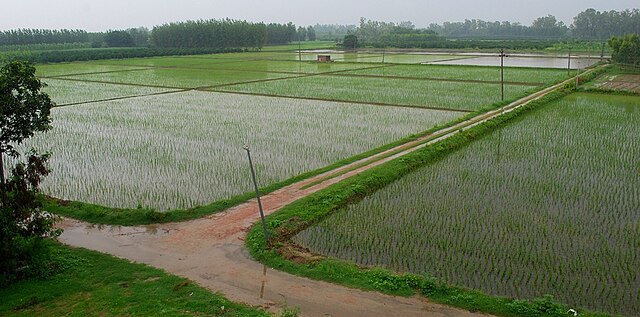Ample food supplies and manageable prices are just a season away as India’s kharif crop area surges by 14%, the agriculture ministry says.
Shri Shivraj Singh Chouhan, the Minister of Agriculture and Farmers Welfare and Rural Development confirmed that the pulse acreage alone has risen by 50% from 2023’s. He was speaking during a review of kharif (autumn) crops near the capital New Delhi on July 11, 2024.
This is good news for the world’s 5th largest economy as 50% of its food grows during the June-October monsoon.
At the top of the minister’s agenda is widespread procurement of critical legumes to farmers. Top choices include urad (Vigna mungo bean or black gram), arhar (pigeon pea or tur), moong and masur (lentils).
The Minister pledged to provide 100% procurement support for farmers for these pulses if they have not sowed them already.
This seed provision coincides with uptick rainfall, with weather reports indicating above normal monsoon early July after a mean start in June.
According to the Hindustani Times, till July 8, 2024, the Southwest Monsoon had increased precipitation by 2% above its usual force.
Area Increment for India’s kharif crops Means Low Food Prices
For now however, the focus is on the actual increase acreage, as this is critical for food price control.
The Ministry’s data shows rice acreage has increased to 5.9 million hectares from 2023’s 5 million hectares. This could not only help India revert a ban on white rice exports but could also cool export prices. Key among varieties is basmati, whose export prices rose by 15% in November 2023 to 50,000 rupees ($598.50) a tonne.
Plantation crops are also doing well, with the sugarcane acreage up marginally from that of 2023 to 5.6 million hectares. This could ameliorate cane prices that the government hiked in February 2024 to 340 rupees ($4.07)va quintal from 2023’s 315 rupees ($3.77).
In short, with a monsoon resurgence, India’s residents could see food inflation cool from an 8.7% high of May 2024. And as the statistics below show, increasing India’s kharif crop acreage, particularly pulses, could mean self-sufficiency for 1.42 billion nationals.
India Agricultural Acreage Statistics
As early as 1983, 77% of rural families in India depended on agriculture. Today, 3/4 of India’s citizens depend on rural employment, including agriculture. This is why the government finds it critical to expand arable land for agricultural activities. Though India is a huge country with a span of 3.29 million km2, only 1.78 million km2 is under agricultural land. This acreage has stagnated since 2009 when the area had hit a high of 1.8 million km2. However, this is pretty high by global standards, given that in 2021, India ranked 7th worldwide in agricultural acreage. In comparison, the leader China had 5.2 million km2 of cultivated land in 2021.
How huge is pulse acreage in India?
As the world’s biggest pulse-producing nation at 23 million tonnes , India also boasts the largest pulse area at 30 million hectares. 90% of pulse production is centered in 10 states that include Rajasthan, Madhya Pradesh, Uttar Pradesh, Gujarat, Telangana, Jharkhand, Karnataka and Chhattisgarh. But these states cannot feed the whole population and hence huge imports fill the gap. Indeed, India accounts for 25% of global pulse imports, which totaled 5.6 million tons in the 2017-18 year.
Which are the most popular pulses in India?
The most popular pulses in India are chickpeas, urad beans, tur (pigeon peas), mung beans and moong in descending order of production.
